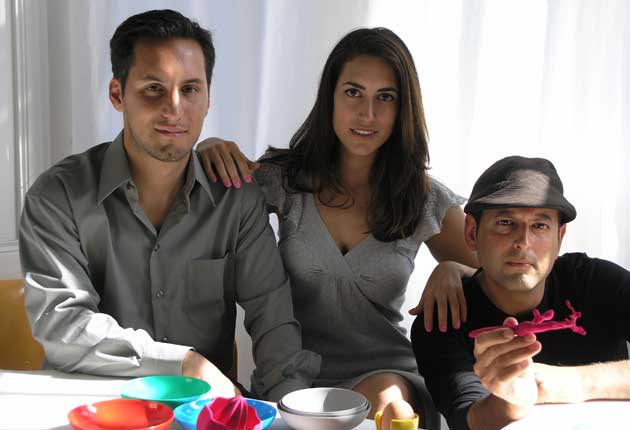Digital Forming: Off-the-shelf homeware
Now, thanks to a tech-savvy new firm, you can create your own bespoke pieces

How often have you nearly bought something for your house or flat but held back because it's just slightly the wrong colour, or too big for the space? Or would you have had it if it was slightly more rounded? Well, now, thanks to a revolutionary new technology, you can redesign it yourself.
It's called Digital Forming, and has been created by a team of young designers and software developers from London. They have devised a computer program (available to download this month) which links to the company's 3D printer, allowing you to choose from a range of homewares and redesign them your heart's content – from basic objects like bowls and vases to pens and lemon squeezers.
And that's not all. At the moment, you can only choose from a selection of pre-designed objects from the developers, but they are hoping to agree licensing deals with major high street stores. So then you might be able to have that gorgeous Habitat lampshade in the colour you want rather than the colours deemed fashionable for autumn.
The possibilities are endless and it means that even if you haven't study design you can still be a designer.
"This is the industrial revolution of the digital age," boasts Lisa Harouni, one of the founders of Digital Forming Ltd. " People are getting bored with the idea that one model fits all and they want to express themselves."
Currently, there are several basic designs on offer that you can customise, with the items costing around £30 including delivery from UCODO.com (User Co-Designed Object). There are some parameters in place; for example, the object will have to remain true to its function or the software will block you. So if you are making a teapot and the spout becomes too large or the handle too small, you will not be able to continue.
The three-dimensional printer the firm uses to bring your design to life works by using a powerful laser to salami-slice powdered plastic into layers, which are then fused together. The genius is that it can do it differently each time so every product can really be a one-off. The technology has been around for 20 years but it hasn't been available to the public – mainly due to the prohibitive cost of the machines, which cost from £150,000 to £1.3m.
The great thing is that you don't have to understand basic physical properties that mean a lampstand will stand up straight and carry the weight of the shade. You can just look at the basic shape and change it to suit your taste. And when it doesn't work any more, the program will intervene.
Subscribe to Independent Premium to bookmark this article
Want to bookmark your favourite articles and stories to read or reference later? Start your Independent Premium subscription today.

Join our commenting forum
Join thought-provoking conversations, follow other Independent readers and see their replies